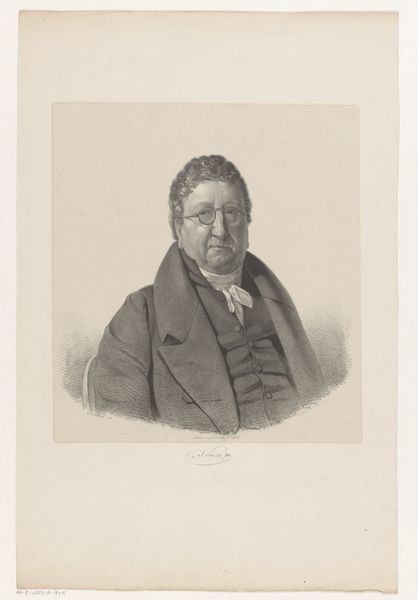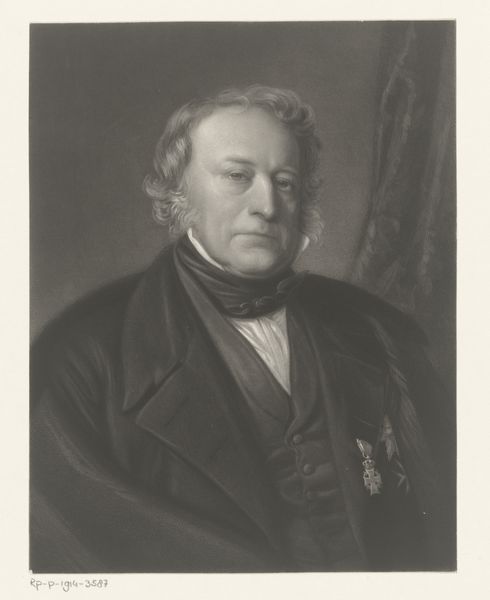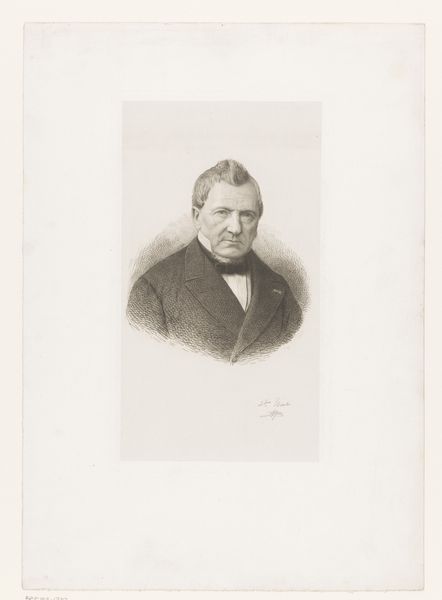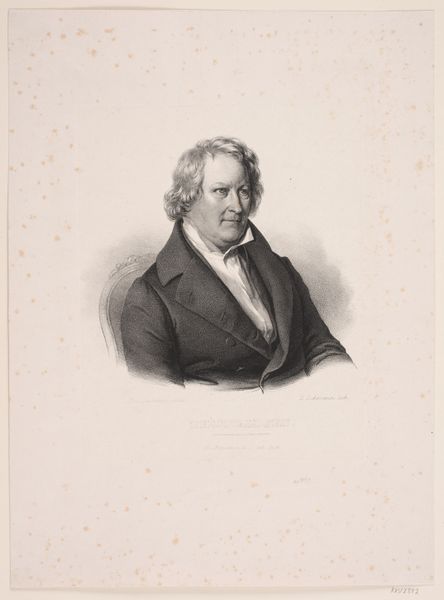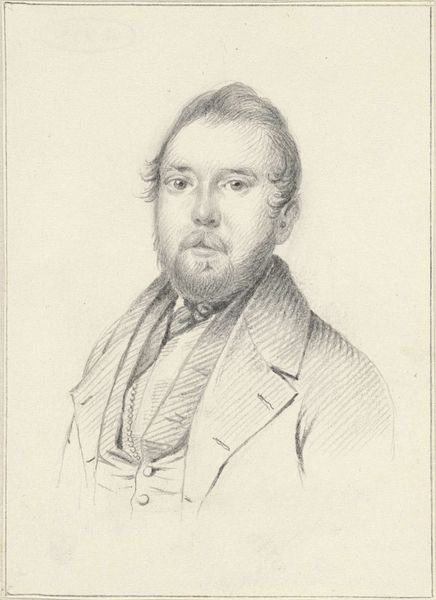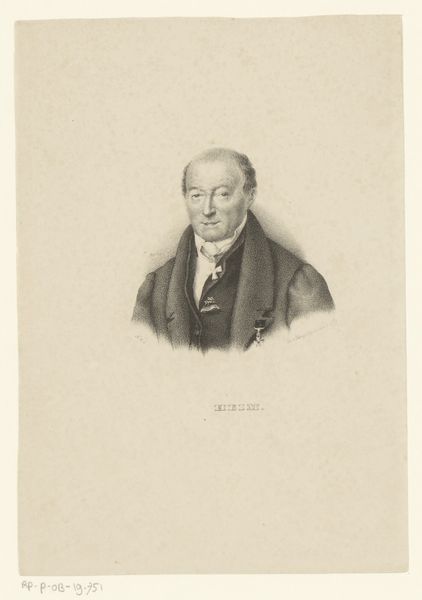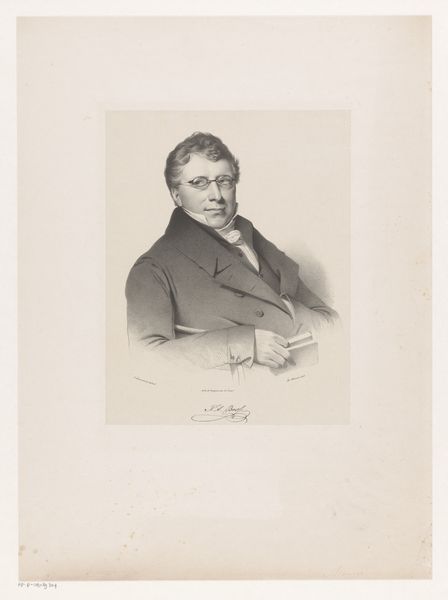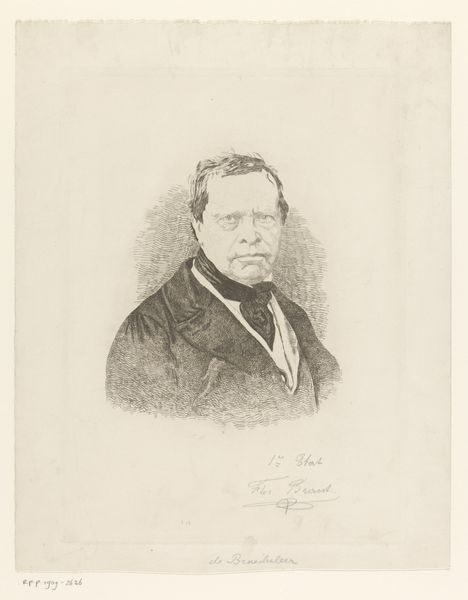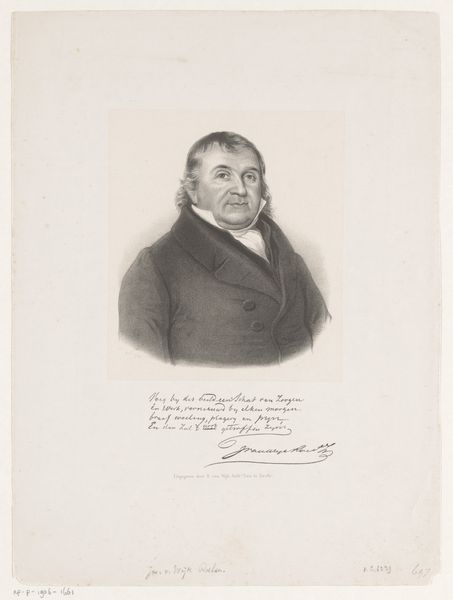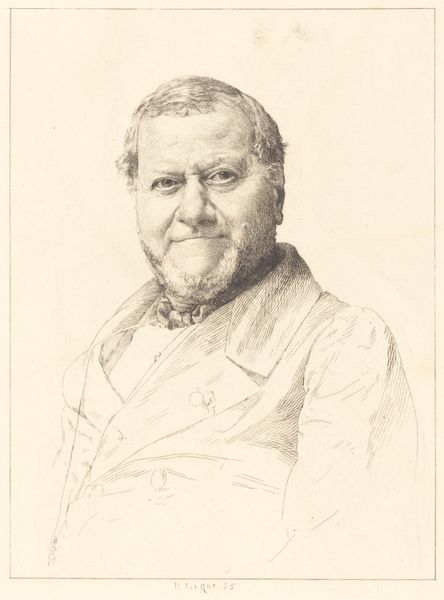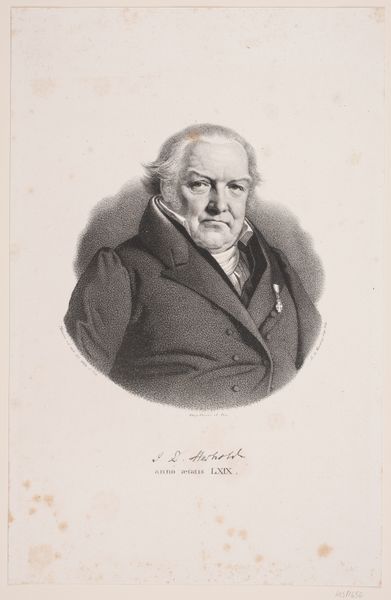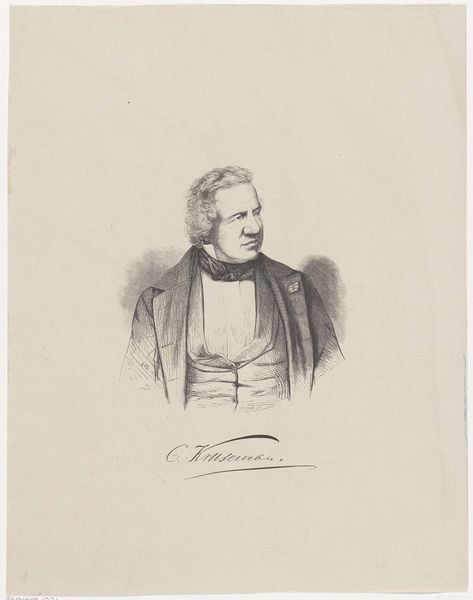
drawing, pencil, graphite
#
portrait
#
pencil drawn
#
drawing
#
pencil sketch
#
caricature
#
pencil drawing
#
pencil
#
graphite
#
portrait drawing
#
academic-art
#
fine art portrait
Dimensions: height 379 mm, width 283 mm
Copyright: Rijks Museum: Open Domain
Editor: So, this is "Portret van Jan Schouten," created in 1862 by Jan Cornelis van Rossum, using pencil and graphite. It's striking how the artist captured this person's… presence. It feels very formal and reserved. What can you tell me about this portrait? Curator: What I see is a compelling study in the power dynamics inherent in portraiture during that period. Think about the socio-economic context of 1862. Who had their portrait drawn? What did it signify? The controlled expression and meticulous detail speak to a specific performance of identity, a desire for posterity and control over one's image. Consider how class and status play into this representation. Does it reveal a truth, or construct one? Editor: That's a fascinating way to look at it. I hadn’t considered the "performance" aspect so directly. The subject, Jan Schouten, appears quite self-assured, maybe even imposing. Curator: Indeed, and how does van Rossum contribute to this portrayal? His choice of medium—pencil—allows for nuanced shading, creating depth and volume, enhancing Schouten's presence. But let’s also consider the historical lens. Is Schouten passively being represented or is there a sense of agency implied by his gaze? To what extent is his personal identity, and the social expectations surrounding him, being negotiated on that paper? Editor: I see your point. It's not just about Schouten, but also about the artist’s interpretation and the societal pressures influencing both of them. The seemingly straightforward portrait becomes a complex interplay of identity, power, and artistic expression. I never considered that so many different things were being said within the piece. Curator: Exactly. By unpacking these layers, we move beyond a simple likeness and enter into a dialogue with the past, exploring the construction of identity and the socio-political forces that shaped it. Editor: Thanks, I will never be able to view portraits again without remembering to examine how society influenced not only how the piece was made, but also the perception of the subject.
Comments
No comments
Be the first to comment and join the conversation on the ultimate creative platform.
